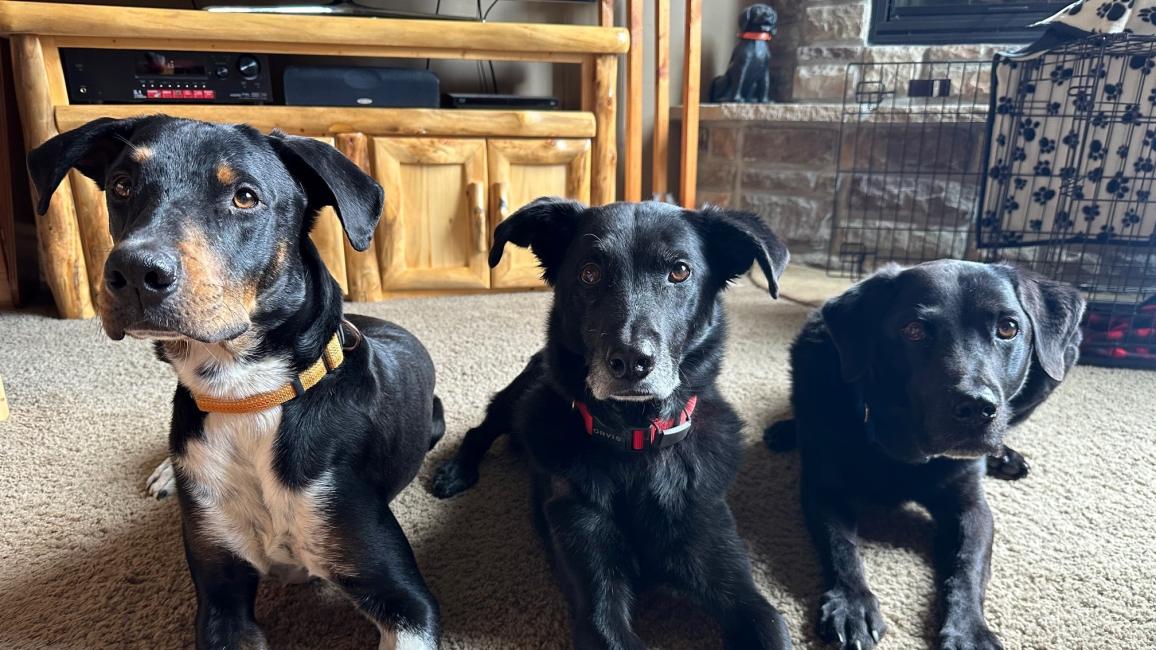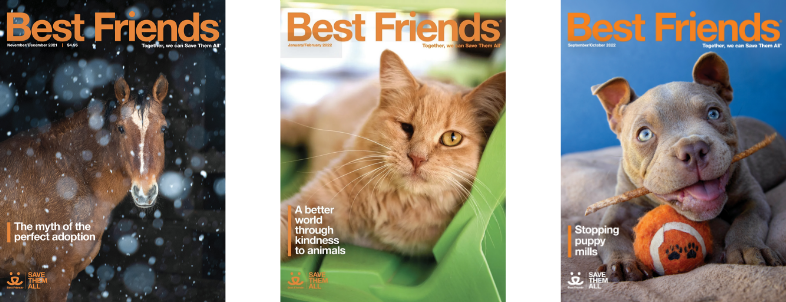Super volunteers for animals

Troy was having a hard time. The sensitive, tricolored pup had been adopted a few days earlier from Best Friends, and in his new home he was anxious and destructive when left alone, even for short periods. He was also really scared to ride in the car. These are the kinds of challenges that can make or break an adoption, but there was help for Troy, his brand-new family, and their budding relationship: a Best Friends volunteer named Kim Glenn.
In no time, Kim was on the phone with Troy’s adopters to talk through the situation and then follow up by email with more information. The family took her advice and, within a few weeks, reported that everything was going beautifully. They said Troy was completely integrated into his new family and had a home for life with them. That’s the power of volunteers like Kim. She’s one of more than 80 Best Friends NOVA volunteers. NOVA stands for National Operations Volunteers and Ambassadors; they work behind the scenes remotely from wherever they live — like total superheroes.
Virtual volunteering with animals
“This team is different from the volunteers who work hands-on with the animals,” says Christine Colvin, Best Friends national community engagement coordinator. “They report for duty at their home computer, rather than one of our Best Friends locations.” NOVA volunteers help the animals through virtual adoption processing, records management, medical records support, and fostering and behavior support. “Each of these roles is necessary in the process of caring for and adopting out the thousands of pets Best Friends takes in each year,” says Amanda Farah, national training and behavior coordinator.
[Volunteers expand homeless dogs’ worlds]
The NOVA adoption follow-up program had been active for about six months when Kim helped Troy by talking with his new family. Amanda says the small but mighty (and well-qualified) behavior team has provided support to more than 100 adopters in the six months since the program began. She says, “We’re getting more requests every day. Our volunteers are absolutely fantastic. They’re experienced, proactive, and so great at following up with the harder cases to make sure adopters feel supported.”
That wasn’t the end of the story for Troy. The adopters continued to follow Kim’s advice to help him feel better about car rides, and when we heard from them three months post-adoption, Troy had just traveled happily and confidently with his family on a cross-country road trip. Kim provided the resources, the adopters carried out the plan with consistency, and Troy is now positively flourishing in his new home.
This article was originally published in the March/April 2024 issue of Best Friends magazine. Want more good news? Become a member and get stories like this six times a year.
Let's make every shelter and every community no-kill by 2025
Our goal at Best Friends is to support all animal shelters in the U.S. in reaching no-kill by 2025. No-kill means saving every dog and cat in a shelter who can be saved, accounting for community safety and good quality of life for pets.
Shelter staff can’t do it alone. Saving animals in shelters is everyone’s responsibility, and it takes support and participation from the community. No-kill is possible when we work together thoughtfully, honestly, and collaboratively.







